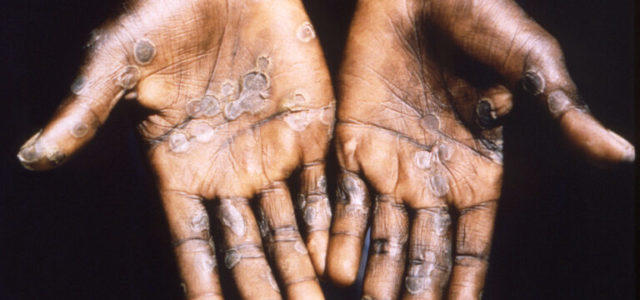
Caption
Forty-three people in Georgia who were being monitored in July for monkeypox after traveling with a passenger with the disease have passed through the 21-day period for potential infection, and there were no reports of symptoms.
Credit: CDC photo

